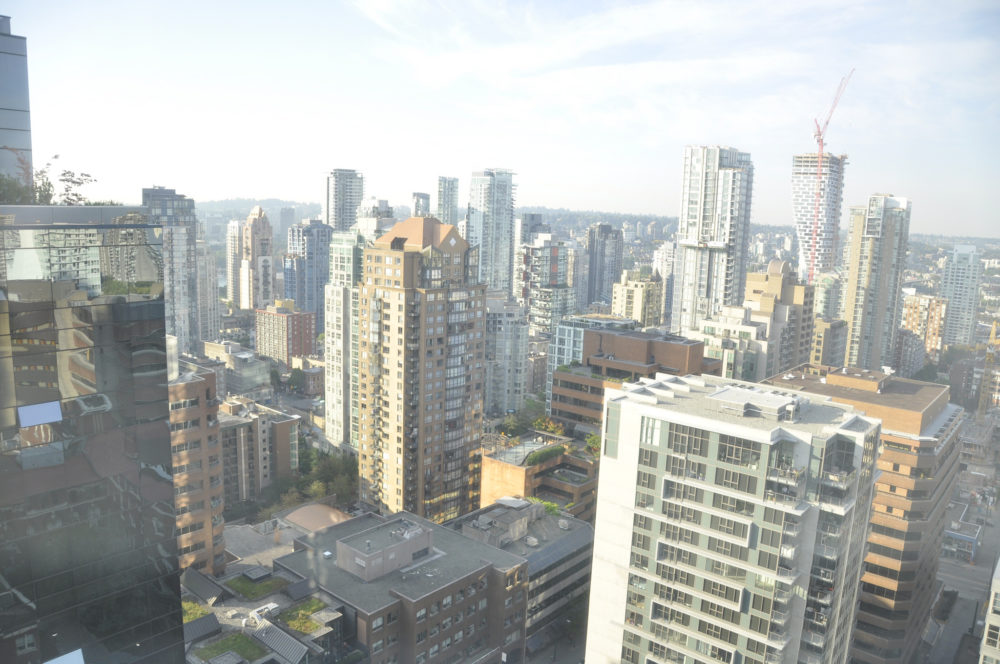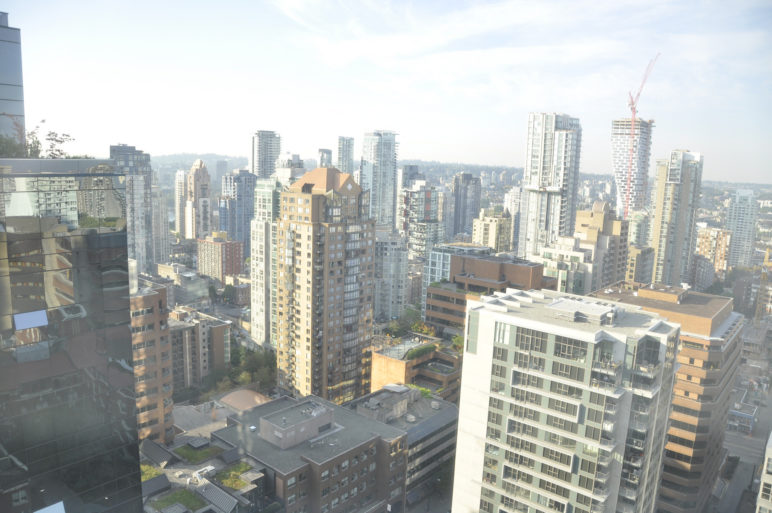The politicians opposing British Columbia’s upcoming electoral reform measure are trying to frighten voters by telling them Proportional Representation (ProRep) makes ridings too big and breaks the local representation and accountability between voters and lawmakers.
But the three ProRep options BC voters will see on their mail-in ballot weren’t just picked from a hat. And the BC voting referendum itself is the product of a demand for fairer representation—10 of the past 12 elections in BC, for example, went to a candidate or party with less than a majority of support.
The BC Greens and the BC New Democratic Party (NDP) formed a coalition last year based in part on a shared commitment to electoral reform. Legislators asked Attorney General David Eby to study the issue of electoral reform and make recommendations. The AG held a public comment period and gathered feedback from more than 100,000 individuals and organizations, and his team used that data to recommend four key principles that must be represented in any proposed electoral reforms:
- Proportionality: Must provide for generally proportional results, but not at the expense of other key principles and values identified in the public engagement
- Local representation: Must respect British Columbians’ desire for local representation in all areas of the province and balance the particular needs of urban and rural areas
- Simplicity: Must not be too complex to be effectively communicated to voters or for voters to use if adopted
- Size of Legislative Assembly: Must not require a significant increase in MLAs
Each of the three ProRep options on the BC ballot was specifically designed to address those concerns. For those unfamiliar with the BC’s current ridings, many of the urban ridings are less than 10 square kilometers. A ProRep policy could expand them to ten times their current size and voters could still easily get to their MLA’s office. But three rural ridings—Stikine, Peace River North, and North Coast—are more than 100,000 square kilometers, meaning a voter could drive all day and never reach an MLA. Those ridings can’t afford to get much bigger and all three ProRep ballot options would ensure rural ridings stay close to their current size.
How each option was born
Back in 2004, a group of regular BC citizens called the Citizen’s Assembly spent a year studying proportional representation. Their objective was to recommend a type of ProRep that would best fit British Columbia. They selected the Single Transferable Vote, in part because it allows citizens to directly vote for candidates, without relying on party lists. The proposal was extremely popular and won 58 percent support in a 2005 referendum, but it still fell just shy of the 60 percent threshold. In part, that was due to a valid criticism: it would have made rural ridings much bigger than they are now.
Canadians then got to work modifying existing forms of ProRep to meet the needs of rural ridings. Some built off the BC Citizens’ Assembly and came up with a modified form of the Single Transferable Vote and called it Rural-Urban PR. It keeps voters in control of choosing candidates but also maintains the relative size of rural ridings. Another Canadian came up with Dual Member Proportional to meet Canadians needs by keeping a simple, familiar ballot and same-size rural districts. The Attorney General of British Columbia’s team modified a popular form of ProRep called Mixed Member Proportional to use smaller regional districts rather than large province-wide races.
Each of the three ProRep options BC voters will see on the ballot in October was carefully designed to serve both its densely populated urban areas and its sparsely populated rural tracts. More about each is below.
Rural-Urban PR
As the name implies, this ProRep option was made-in-Canada to address the size difference between urban and rural ridings. Small urban ridings would combine into larger, multi-MLA ridings and voters would rank their candidates. The largest rural ridings would stay about the same size—more than 100,000 square kilometers—and would still elect one MLA per riding. Rural voters would also elect a group of MLAs to, together, represent the entire rural region.
Small urban ridings would combine into larger, multi-MLA ridings and voters would rank their candidates. The largest rural ridings would stay about the same size
Mid-sized ridings, like West Vancouver-Sea to Sky and Maple Ridge-Pitt Meadows, might double up and elect two MLAs from a riding of around 13,000 square kilometers. Right now, voters in those two ridings from Vancouver to Devine have an MLA within a hundred kilometers, but only 41 percent of them have an MLA they voted for. The 56 percent of voters who wanted to see the BC NDP’s or BC Greens’ affordable housing policies enacted have no MLA to stand up for them because both ridings are represented by Liberals who won with less than half the votes. With Urban-Rural PR, voters in the newly combined riding might choose one Liberal candidate and one NDP candidate; all voters would have a local MLA within about a hundred kilometers, and all voters who wanted either a Liberal or an NDP candidate would have a local MLA speaking for them in Victoria.
Compact urban ridings in Vancouver might combine into six-winner ridings and each voter would rank their top candidates. For example, Vancouver-False Creek, Vancouver-Fairview, Vancouver-Hastings, Vancouver-Langara, Vancouver-Quilchena, and Vancouver-Mount Pleasant might combine to create a riding of 80 kilometers square—that’s still just a fraction of the size of Stikine. Right now, Green voters in those ridings aren’t able to elect a like-minded MLA, but with Urban-Rural PreRep there’s a much better chance a Green candidate would be elected as one of the six MLAs.
And if voters in a particular neighborhood galvanize around a local issue and really want the provincial Legislative Assembly to address it, it’s possible. If support for that issue makes up at least 14 percent of the vote in the riding, a hyper-local candidate can be elected.
Mixed Member Proportional (MMP)
Mixed Member Proportional (MMP) takes a hybrid approach, electing about 60 percent of MLAs from single-winner ridings just like now, and the other 40 percent from larger regional ridings. Large rural ridings would get a bit bigger than they are now, but would otherwise remain the same—single-winner ridings where voters elect their favorite MLA.
MMP takes a hybrid approach, electing about 60 percent of MLAs from single-winner ridings just like now, and the other 40 percent from larger regional ridings.
But voters would also get to elect regional representatives. Rural areas would have a slate of rural representatives, Vancouver ridings would have a regional slate, as would coastal, eastern, and suburban regions. If a voter didn’t get the MLA they hoped for in their local riding, they could still send an MLA of their choosing to Victoria as a regional representative. That MLA would represent a geographic area larger than the local riding, but much smaller than the whole province.
Dual Member Proportional (DMP)
In Dual Member Proportional (DMP), smaller urban and suburban ridings would double-up—each riding would merge with a neighbor and each would elect two MLAs. So, Vancouver-Mount Pleasant and Vancouver-Hastings might combine to form a still-accessible 27-kilometer square riding with two local representatives to give more voice to all of the voters in the riding.
Smaller urban and suburban ridings would double-up. The largest rural ridings would stay as they are and elect one MLA each.
And, as in the example above, West Vancouver-Sea to Sky and Maple Ridge-Pitt Meadows might join together and elect both a Liberal and an NDP candidate.
The largest rural ridings would stay as they are and elect one MLA each. Stikine and Peace River North would get no bigger.
ProRep would give BC voters more voice
BC voters may be so used to not having real choices that the anti-ProRep arguments make sense to them. Voters might think, “Of course most voters can’t have a voice in Victoria—they haven’t in the past!” The great irony is opponents depending on voters’ cynicism to make ProRep sound too good to be true. But it is true. ProRep would give voters a voice by giving them the chance to elect an MLA who will stand for what they believe in.
Thanks to Trygve Madsen for helping to research this article.











Richard Lung
This article reads like the fairy god-mother of BC power politics. The three referendum options indeed were not picked out of a hat. Two of them were picked out of thin air, never having been used. And one of those was already mooted by the present leadership, from the beginning of their gaining office, namely that they did not think the BC Citizens Assembly recommendation of STV should be used, without what HG Wells prophetically called, in the electoral reform context, “essential mutilations.”
Hence, the RUP treatment of STV as a shackled prisoner to the collectivist parties favored MMP. Because, party bosses, and their camp-following meddlers, in their wisdom, knew better than the disinterested independent BC CA who took a year, to study the matter, and decisively reject MMP, in favor of STV.
And citizens members, from every riding, did solve the rural-urban representation problem, far more equitably than the bogus RUP, with its dead-weight MMP addition.
MMP is so bad a system that it even attracted unusual plain-speaking from an independent official report, namely that it denies the voters the fundamental democratic right to reject candidates, and should be replaced by STV. (Richard report, since seconded by the McAllister report)
(Editor:)
John Stuart Mill: Proportional Representation is Personal Representation.
The Angels Weep: H. G. Wells on Electoral Reform.
(Richard Lung:)
Peace-making Power-sharing;
Scientific Method of Elections.
Science is Ethics as Electics.
FAB STV: Four Averages Binomial Single Transferable Vote.
(in French) Modele Scientifique du Proces Electoral.
Lee Mortimer
I have generally favored a simplified MMP with perhaps 10% list seats to assure proportionality (at least between the major parties) and that is also politically viable and easy to understand and implement. MMP seems to have a good track record in Germany, New Zealand, Scotland and Wales. So, I’m not sure how Richard Lung makes his pronouncement about MMP as “so bad a system.” I have since looked at the DMP system and think it makes a lot of sense. I’m going to be advocating DMP for our state legislative elections in North Carolina.